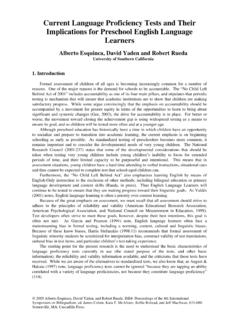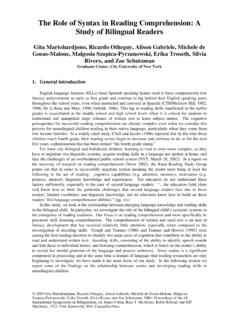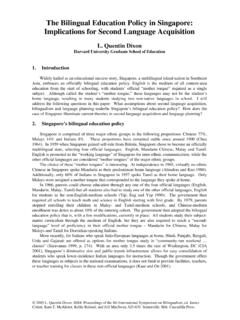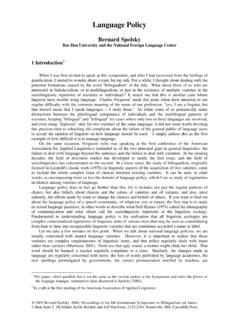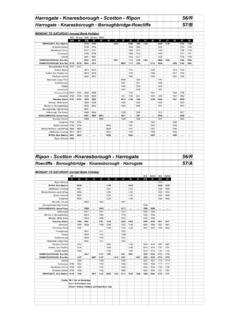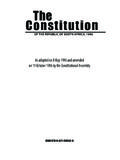Transcription of Code-switching in Bilinguals: Impacts of Mental Processes ...
1 Code-switching in Bilinguals: Impacts of Mental Processes and Language Awareness Claudia Maria Riehl University of Freiburg, Germany 1. Introduction: types of Code-switching Code-switching is a widespread phenomenon in bilingual speech, and it is therefore not surprising that a great proportion of research on bilingualism focuses on this topic. Most researchers, who have paid attention to Code-switching , have however been concerned with the sociological interpretation and discourse functions, the socio-pragmatic aspect, of Code-switching .
2 For this reason, linguists who do not specialize in bilingualism often automatically assume that research in Code-switching means sociolinguistic research. It is certainly an interesting issue to investigate when and why a speaker chooses one linguistic variety rather than another: this can be explained by stylistic or metaphorical motivation, where factors such as the interlocutor, social role, domain, topic, venue, medium, and type of interaction play an important role. In this case, language alternation can also serve as a conversational cue, expressing attitudes towards language or marking linguistic identity (cf.)
3 Tabouret- Keller 1995, Auer (ed.) 1998). Only in recent years has research on the patterns of Code-switching , its grammatical structure, become increasingly focused on in bilingualism research (s. Myers-Scotton 2002: 10ff). Researchers in this field discuss the types of Code-switching structures that are possible within a given data set. It is possible to offer interesting indications about the underlying structure of language systems by analyzing Code-switching constraints, the points within a sentence at which the transition from one language to the other is possible.
4 This approach can be described as the grammatical approach to Code-switching (cf. Auer 1998: 3). Beside this merely systematic aspect, there is a third approach to Code-switching that has not yet been widely considered, but which has been discussed by Michael Clyne in a number of his publications ( Clyne 1967, 1991, 2003). This third aspect is psycholinguistically motivated code - switching : language alternation that is prompted not by the intentions of the speaker but by the specific conditions of language production. In this case it is not the use of language (as in the sociolinguistically conditioned approach) nor the system (as in the grammatical approach) that is the focus of discussion but the Processes taking place in the speaker's brain:1 lexical items that are similar or identical in both languages can function as a trigger for the alternation from one language to another.
5 Such instances provide interesting insights into the Processes of Mental representation of bilingualism on the one hand and bilingual language processing on the other. In contrast to socio-pragmatically conditioned code - switching , the speaker in this case does not alter the language with a specific conversational aim. This means that the Code-switching has no function in the local conversational context, especially when the global interactional behaviour (Franceschini 1998: 61) is based on Code-switching , when languages or codes are not discrete in a given context (Franceschini 1998: 58 speaks of non-functional uses of CS [= Code-switching ] ).
6 2 Because of the obvious difference between these two types of code - 1. In both cases, the sociolinguistic and psycholinguistic approach, the focus is on the speaker who uses the different codes, whereas the grammatical approach focuses on the language system. 2. Franceschini (1998: 65) calls it the dual focus, the speaker uses several codes simultaneously for a longer period of time. She points out that this takes place in less normative contexts and in situations where code - switching is highly accepted at a macrosocial level. She even gives evidence that in this case Code-switching can be acquired directly without a full knowledge of both languages involved (ibid: 56f).
7 2005 Claudia Maria Riehl. ISB4: Proceedings of the 4th International Symposium on Bilingualism, ed. James Cohen, Kara T. McAlister, Kellie Rolstad, and Jeff MacSwan, 1945-1959. Somerville, MA: Cascadilla Press. switching some scholars have suggested giving them different names: the term Code-switching should be used only for socio-pragmatically conditioned code alternation, whereas the psycholinguistically conditioned type should be termed code -mixing (cf. for instance Berruto 1990) or language mixing . (Auer 1999).3 But as Franceschini (1998: 59) points out, this does not present a satisfactory answer, as the basic problem remains: The speakers do use CS [= Code-switching ] but what do they do with it?
8 We also have to take into account that in bilingual speech both kinds of Code-switching can occur within the same utterance, and it is sometimes difficult to decide which type of Code-switching we are confronted with in a given Moreover, even though triggering effects can facilitate transition to the other language at a given point, it is still up to the speaker whether he/she decides to continue the utterance in that language or to switch back to the base-language again. In this paper I shall concentrate on psycholinguistically motivated Code-switching and expound its implications for Mental Processes : in the first part I will provide instances of psycholinguistically conditioned Code-switching by listing the various types of lexical items that can trigger code alternation.
9 The examples are taken from corpora compiled by various scholars in addition to my own, as yet unpublished, corpora of German-Romance and German-Russian To explain these data I will subsequently consider the cognitive prerequisites that can demonstrate the plausibility of triggering effects. I will present a model of the Mental representation of bilingual speech production that can elucidate the highly complicated intertwining of languages and codes in the bilingual brain. Although psycholinguistically conditioned Code-switching , unlike pragmatically conditioned language alternation, is not intentional on the part of the speaker,6 there are differences between language users concerning the frequency of language alternation.
10 I will argue in the last part of this article that this variation can be explained by the language awareness of the speaker, at which point the concepts of monitoring Processes and metalinguistic awareness come into play. 2. Psycholinguistically conditioned Code-switching and triggering Psycholinguistically conditioned Code-switching , or non-functional Code-switching , is non- intentional, it just happens in the conversation of bilinguals and is promoted by so-called trigger- words, which are defined as words at the intersection of two language systems, which, consequently, may cause speakers to lose their linguistic bearings and continue the sentence in the other language.
